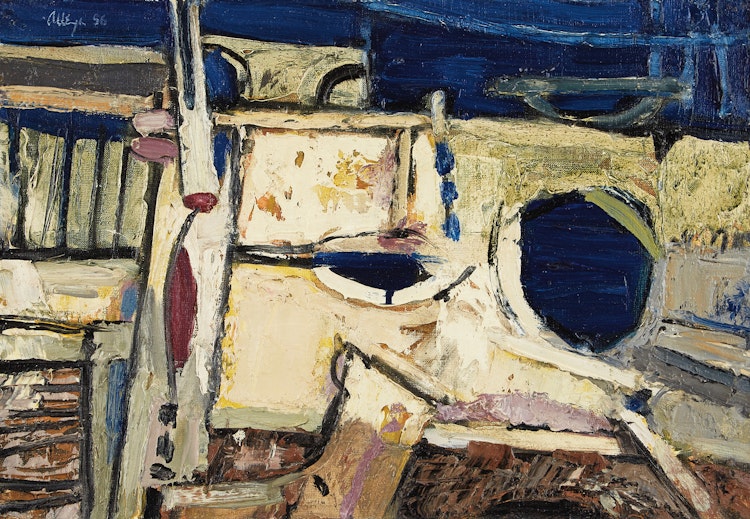Sans titre by Edmund Alleyn

Edmund Alleyn
Sans titre
oil on canvas
signed and dated 1956 upper left
15 x 21.75 ins ( 38.1 x 55.2 cms )
Auction Estimate: $4,000.00 - $6,000.00
Price Realized $6,490.00
Sale date: May 29th 2018
Share this item with your friends
Edmund Alleyn
(1931 - 2004)
Born in Quebec City, Quebec, he studied under Jean Paul Lemieux and others at the Ecole des Beaux-Arts, Quebec. He was influenced in his earlier work by Goodridge Roberts and Alfred Pellan, later by the late Nicolas de Stael whose rich thick surfaces of paint caught the interest of Alleyn.
Alleyn’s recent canvases have become less formal in composition, some are divided vertically through the centre by a lively column of paint, as seen in his canvas “Jacques Cartier arriving in Quebec sees Indians for the first time in his life” shown at the Fifth Biennial of Canadian Painting, 1963. This work was purchased by the National Gallery of Canada. The painting had been described as an attempt to show the feeling of surprise as opposed to the scene which presents the outward appearance of the historical event. Similarly, his painting “Fossilization”, suggests fossilization through a calligraphic column locked between two rock like masses – but is not an attempt to show a fossil, only to give the idea of this phenomenon.
His drawings and gouaches have been described as having an oriental quality and some have been compared with the compositions of Paul Emile Borduas. He travelled to France in 1955 after winning the Grand Prize at the Concours Artistiques of the Province of Quebec and a Canadian government scholarship. He lived in Paris although his work is still exhibited in Canada, and entered in Canadian shows. He held a number of one man shows in Paris; exhibited at Salon des Realités Nouvelles 1958-9-64, and “Mythologie Quotidienne” in 1964, both at the National Museum of Modern Art of Paris; won a bronze medal at the Sao Paulo Biennial, 1959; the Guggenheim International Exhibition 1958 and 1960. Represented: the Vancouver Art Gallery; and the Museum of the Province of Quebec; the Montreal Museum of Fine Arts.
Source: "A Dictionary of Canadian Artists, Volume I: A-F", compiled by Colin S. MacDonald, Canadian Paperbacks Publishing Ltd, Ottawa, 1977

